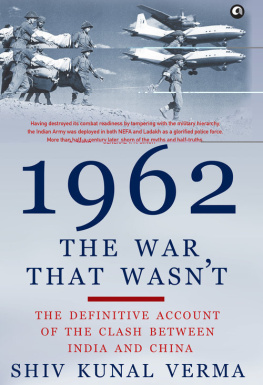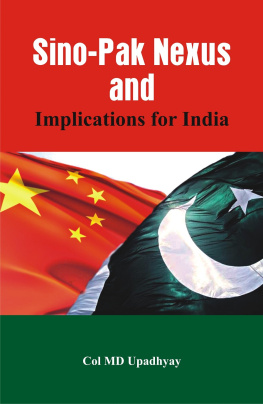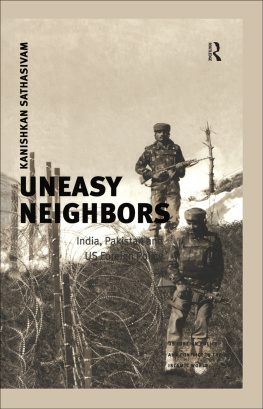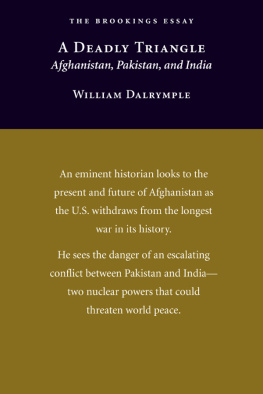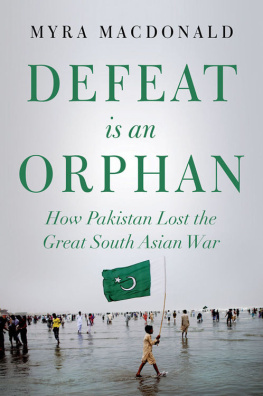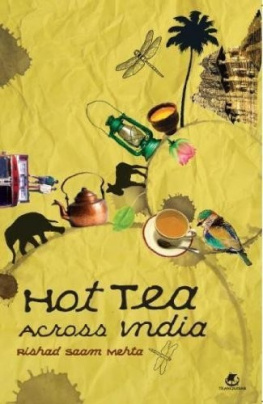After initial setbacks, we had Pakistan on the ropes. They were reeling and had no ammunition left, while we could have gone on for another three weeks. Indias old failing, the lack of a killer instinct, came to the fore with people at the top giving wrong information and taking horrendous decisions. For those of us who fought, we were robbed of a decisive victory. A definitive account of those dramatic days.
Air Marshal Philip Rajkumar, VrC
After his earlier bestselling book on the 1962 conflict with China, the author seamlessly shifts gears and takes us to the 1965 war with Pakistan. From the Rann of Kutch to Kashmir, then to the plains of the Punjab, its a breathtaking narrative of a war that was fought both on the ground and in the air.
Lieutenant General Ajai Singh
17 Poona Horse / Butur Dograndi
For those of us who fought and saw so many of our comrades diemany of whom remained unsung for half a centurythis book is a fitting tribute to their memory. The authors research and understanding of what and how things happened is both excellent and incisive.
Major General Somprakash Jhingon
8 Garhwal Rifles / Butur Dograndi
We did all the hard work, time and again coming back with all the information we could gather, and yet, tragically, it never permeated down to the fighting troops. Both in 1962 and 1965, there seemed to be a mental block when it came to using air power to achieve our objectives. The author once again lays all the cards, face up, on the table as only he can. Every Indian needs to read this book.
Wing Commander Jag Mohan Nath, MVC & Bar
No. 106 Squadron
Also by Shiv Kunal Verma
Ocean to Sky: India from the Air
Military World Games
The Northeast Palette
Assam Rifles: 1835 to 2010
The Long Road to Siachen: The Question Why
Northeast Trilogy (East of Kanchendzonga, Brahmas Creation, and Children of the Dawn)
Courage and Conviction: An Autobiography: General V. K. Singh
1962: The War That Wasnt
South India Trilogy (Tamil Nadu and Puducherry)
Life and Culture in Northeast India
Rainbows End: Welham Boys School

ALEPH BOOK COMPANY
An independent publishing firm
promoted by Rupa Publications India
First published in India in 2021
by Aleph Book Company
7/16 Ansari Road, Daryaganj
New Delhi 110 002
Copyright Shiv Kunal Verma 2021
All rights reserved.
The author has asserted his moral rights.
The views and opinions expressed in this book are those of the author and the facts are as reported by him, which have been verified to the extent possible, and the publisher is not in any way liable for the same.
The publisher has used its best endeavours to ensure that URLs for external websites referred to in this book are correct and active at the time of going to press. However, the publisher has no responsibility for the websites and can make no guarantee that a site will remain live or that the content is or will remain appropriate.
No part of this publication may be reproduced, transmitted, or stored in a retrieval system, in any form or by any means, without permission in writing from Aleph Book Company.
ISBN: 978-93-90652-94-5
This book is sold subject to the condition that it shall not, by way of trade or otherwise, be lent, resold, hired out, or otherwise circulated without the publishers prior consent in any form of binding or cover other than that in which it is published.
For my mother, Usha,
and
the rank and file
of the
Indian Army and the Air Force
who
held the line
Yes, makin mock o uniforms that guard you while you sleep
Is cheaper than them uniforms, an theyre starvation cheap;
An hustlin drunken soldiers when theyre goin large a bit
Is five times better business than paradin in full kit.
Then its Tommy this, an Tommy that, an Tommy, ows yer soul?
But its Thin red line of eroes when the drums begin to roll,
The drums begin to roll, my boys, the drums begin to roll,
O its Thin red line of eroes when the drums begin to roll.
Tommy by Rudyard Kipling
CONTENTS
Book I
Reorganization
Book II
Pakistan Flexes its Muscles
Book III
Marauders from the West
Book IV
All Out War
MAPS
The following maps have been included in the photo inserts:
PROLOGUE
FIGHTING FROM THE ROPES
The Hawker Hunters of Flight Lieutenant Alfred Tyrone Cooke and Flying Officer (later Wing Commander) Subodh Chandra Mamgains had landed in Dum Dum for the second time on the morning of 7 September 1965. They had first become airborne at daybreak, as a combat air patrol (CAP) covering Wing Commander (later Air Chief Marshal) Denis Anthony LaFontaines four-aircraft formation over East Pakistan and had touched down only after the other aircraft had safely returned. Cooke and Mamgain had been scrambled again and after taking off had orbited at 25,000 feet, 50 miles north of Dum Dum, in response to two bogeys that radar had picked up inside East Pakistan, around the time the Pakistan Air Forces (PAF) F-86 Sabres had first hit Kalaikunda. They returned after the two Pakistani planes went back into East Pakistan. Tired and hungry after two operational sorties, they had just scrounged some tea from an airman while their aircraft were being refuelled, when they were scrambled for the third time.
Once again the two Hunters were asked by 411 SU, the radar unit at Rampurhat, to hold in the same area where the bogeys had reappeared on the East Pakistan side. The radar unit instructed them that the Pakistani aircraft were to be engaged only if they crossed the border. Cooke was convinced that the two aircraft that had reappeared on the radar screens were a decoy and he kept calling the ground controllers asking them if there was anything on 55 SUs radar that would suggest incoming aircraft towards Kalaikunda. As they were orbiting and scanning the skies for visual contact, the voice of a very excited controller came across on the RT. Kalaikunda was indeed under attack again; could the Hunters make it there?
The three Vampire pilots killed on 1 September at ChhambBhagwagar, Joshi, and Bharadwajwere either course mates or close buddies of Cooke who used to hang around with him in Poona. I was seething with anger and had been praying for a chance to get back at the Pakistanis. The youngest of five brothers and four sisters, I had survived with my fists and was also a boxer in school. In the ring, as an eight-year-old, I had fought a thirteen-year-old who thrashed me in round one. My brother, who was my second, asked me during the break what I was going to do about it. In round two, I went after the guy with a vengeance and in round three, he ran away, saying I was a lunatic. My father had given me a piece of advice which kept ringing in my headpick a fight only if you know that you will be the one to finish it. I had a lot of self-belief; I knew I was one of the best air defence pilots in the air force, if not the best, Cooke would say later.


